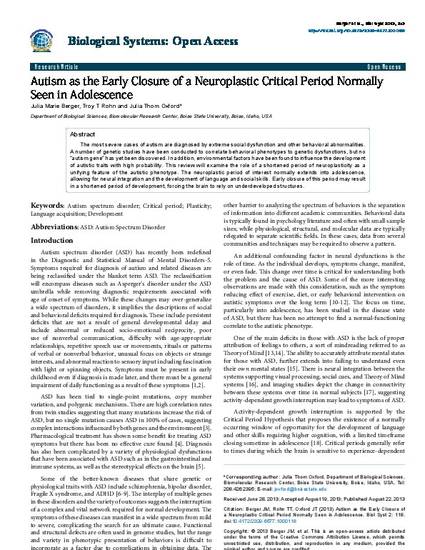
The most severe cases of autism are diagnosed by extreme social dysfunction and other behavioral abnormalities. A number of genetic studies have been conducted to correlate behavioral phenotypes to genetic dysfunctions, but no “autism gene” has yet been discovered. In addition, environmental factors have been found to influence the development of autistic traits with high probability. This review will examine the role of a shortened period of neuroplasticity as a unifying feature of the autistic phenotype. The neuroplastic period of interest normally extends into adolescence, allowing for neural integration and the development of language and social skills. Early closure of this period may result in a shortened period of development, forcing the brain to rely on underdeveloped structures.
This document was originally published by OMICS Publishing Group in Biological Systems. This work is provided under a Creative Commons Attribution License. Details regarding the use of this work can be found at: http://creativecommons.org/licenses/by/3.0/. DOI: 10.4172/2329-6577.1000118.
Available at: http://works.bepress.com/troy_rohn/46/
